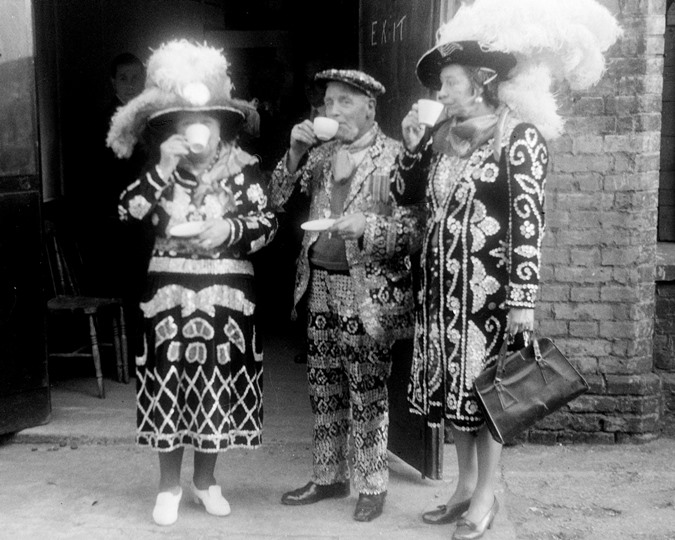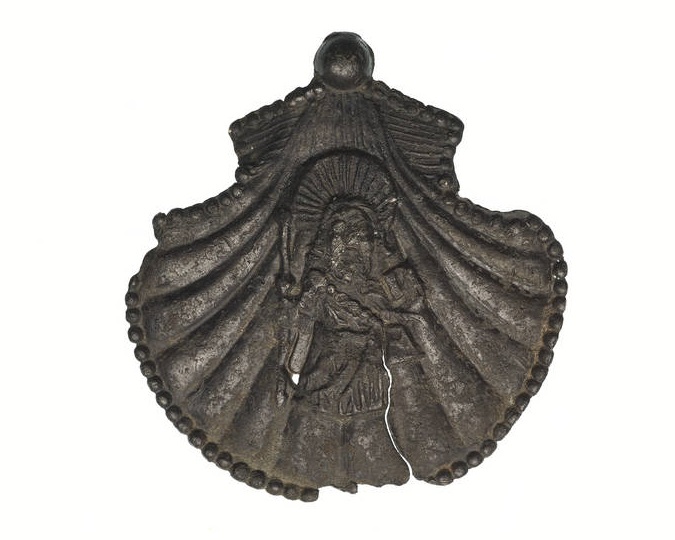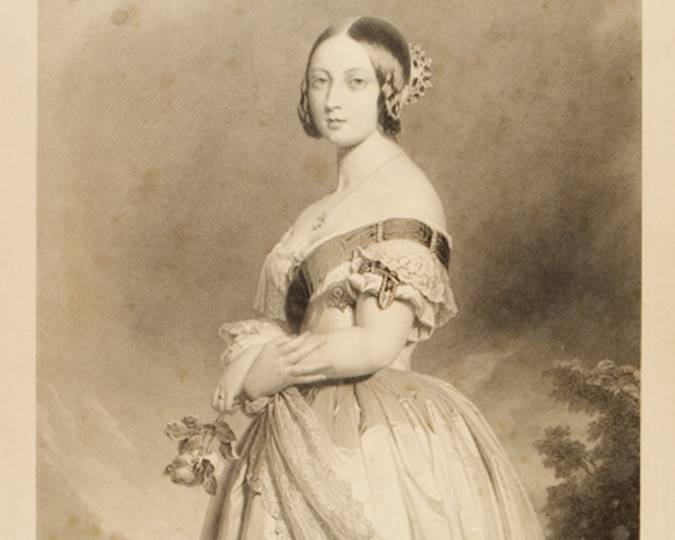The Museum of London will shortly move to a new home in Smithfield General Market, a site that has been at the heart of London life for centuries. Curator Kate Sumnall dives into one of the most dramatic episodes in that rich history.
Over 60 years ago, in the early hours of 23 January 1958, London saw one of its worst fires since the Blitz. The scene was the basement of the Smithfield Poultry Market, in the heart of the City of London. Two firefighters, Station Officer Jack Fourt-Wells (aged 46) and Firefighter Richard Stocking (aged 31) lost their lives fighting this fire, and around fifty other firefighters from stations across London were injured or treated for smoke inhalation. All members of the public were safely evacuated.

Firefighters tackle the blaze at Smithfield Market
Copyright London Fire Brigade.
Over three days the fire burned and raced through the two and a half acres of basements underneath Smithfield market, the flames leaping up through the Poultry Hall. Firefighters from Clerkenwell fire station were the first onto the scene, including Fourt-Wells and Stocking. To tackle this blaze fire stations across London sent a total of 1,700 fire fighters. Over 389 fire engines and other support vehicles either attended the fire or were moved across London to provide relief and fire cover.
The fire started in the basements, which were stacked with hundreds of crates of poultry, beneath the Poultry Market. The fire quickly spread due to the wooden match boarding lining the basements. Over the years of use these had become soaked with fat which further fuelled the size and speed of the fire.
The Times on January 25 reported that:
‘By dawn the stalls and contents of the market had been destroyed, the roof had collapsed and the walls, a blackened shell, enclosed a twisted heap of ironwork and broken masonry… The floor of the poultry market collapsed shortly after 2a.m… Heat caused an explosion at one corner of the market and paving stones were thrown into the air… Flames 100ft high lit the night sky.’

Firefighters descend into the basements to tackle the blaze
Copyright London Fire Brigade
At this time the basements were a series of small rooms and corridors. The fire caused them to fill with thick, acrid smoke and so the firefighters felt like they were entering a labyrinth. This combined with a collapse of frozen meat packages and carcasses trapped Jack Fourt-Wells and Richard Stocking. Their colleagues were unable to find them before their oxygen ran out. They were wearing 'Proto' oxygen sets, which at the time were state of the art. Many attempts were made to resuscitate both men but tragically they were pronounced dead at the scene.
The London Fire Brigade describe this as a ‘landmark fire in the history of London’ where as a result of this tragedy, improvements were made to the breathing apparatus (BA) and procedures used by firefighters. These improvements were adopted all over the country and are still in use today. These improvements included using compressed air cylinders, and an automatic warning signal which sounds as the oxygen levels are running low.
Also, BA boards were introduced, with tallies and systems to keep track of the location of the firefighters and the timings of when they entered the fire. A BA Controller would now have responsibility for managing these systems, ensuring firefighters did not run out of oxygen. Similarly, London County Council also sought special powers to be able to deal with fire precautions across all the central London markets.
The fire utterly destroyed the Victorian Poultry Market building, with the distinctive towers collapsing during the blaze. The new building didn’t just seek to replace what was, instead the architects TP Bennett and Son, working with the structural engineers Ove Arup and Partners, sought to push the boundaries of what was possible. They designed a building with the largest concrete shell structure ever built. At 69 by 38 metres, it was the largest clear spanning dome roof and concrete shell in Europe at the time. The external roof surface and gables on each side were clad in copper, which visually links with the copper pavilions on the corners of the Victorian market buildings. The overall effect of the elliptical paraboloid roof, with the series of small windows below, makes it appear the massive roof is just resting on its corners: it creates a striking landmark in London.
The new building was built 1961-3 at a cost of £2 million. This building brought modernisation and also improved efficiency of the market. It was intended to act as a template for the modernisation of all the Smithfield Victorian market buildings. In 2000 the Poultry Market building was Grade II listed for being of special architectural and historic interest.
The Victorian building (opened 1875) had been innovatively designed by Sir Horace Jones to function optimally as a market building, with the roof structure designed to maintain an even, cool environment to preserve produce. The layout of the ground floor was also designed to connect with the Meat Market and General Market buildings, to allow an efficient flow of people and produce between the markets. The buildings were intended to create an impressive visual impact. Horace Jones was bringing the market into the modern era of the late 19th century, with all the rapid developments and advances of that industrial age.
Similarly, TP Bennett’s design for the new Poultry Market embraced architectural innovation, and also added measures to increase efficiency and to make the market more sanitary in line with modern standards. The market hall was designed to be double height, with rows of market stalls on the ground floor and a first floor gallery for office space. There are covered delivery bays and automatic ventilation. There is also an improved layout in the basements, with integrated refrigeration and insulation. These basements comprised large rooms flowing from a central corridor: an improvement on the previous labyrinth of rooms. Finally the basements also included a new pub for the market, the Cock Tavern. This was a pub with an early licence to cater for the market workers.

The Cock Tavern beneath Smithfield Poultry Market
Image by Oxyman, Creative Commons BY-SA.
Pubs with early licences were common around markets, docks or other industry sites with shift workers. A lot of market business was conducted in these ‘early houses’. It also acknowledged that for shift workers or market workers their working day ended in the early hours and they would want a drink and some food. These pubs are famous for their cooked breakfasts accompanied by a pint.
Smithfield used to have at least half a dozen early houses. However, there has been a recent decline due to increasing prices, the anti-drink/drive campaigns and the congestion charge in 2003. This decline has meant that pubs have closed or shifted to regular hours. The Cock Tavern in the basement of Poultry Market closed in 2013. The Hope and The Fox and Anchor are two of only three early houses still operating in Central London.
We are currently working on our vision of what the new Museum of London will look like: could it include a new Cock Tavern? Fancy breakfast and a pint before your visit to the museum?
As the Museum of London prepares to move into its new home in West Smithfield, including the Poultry Market basements, documenting the site’s history – from its medieval beginnings as a ‘smooth field’ right up to the present day - is increasingly important. The Poultry Market fire is just one example of the rich history of the area; a tragic event which changed British firefighting and led to the introduction of new innovative architecture in the area. The sixtieth anniversary is a reminder of the many layers of history that make up London, which we will chronicle in the New Museum.














